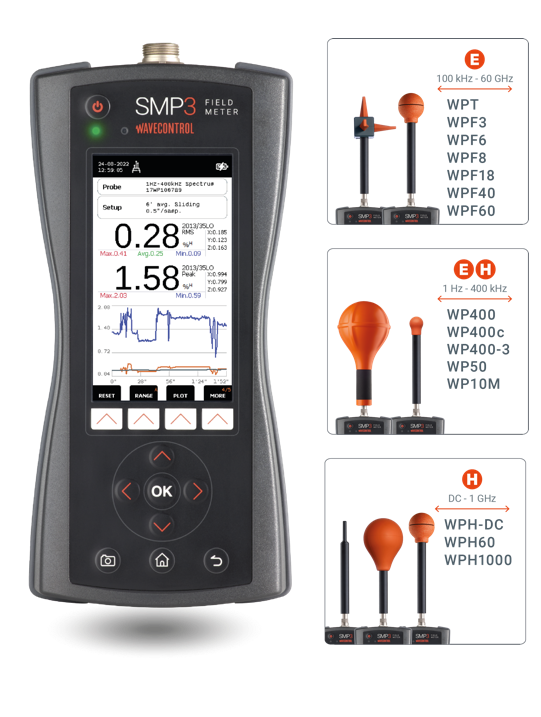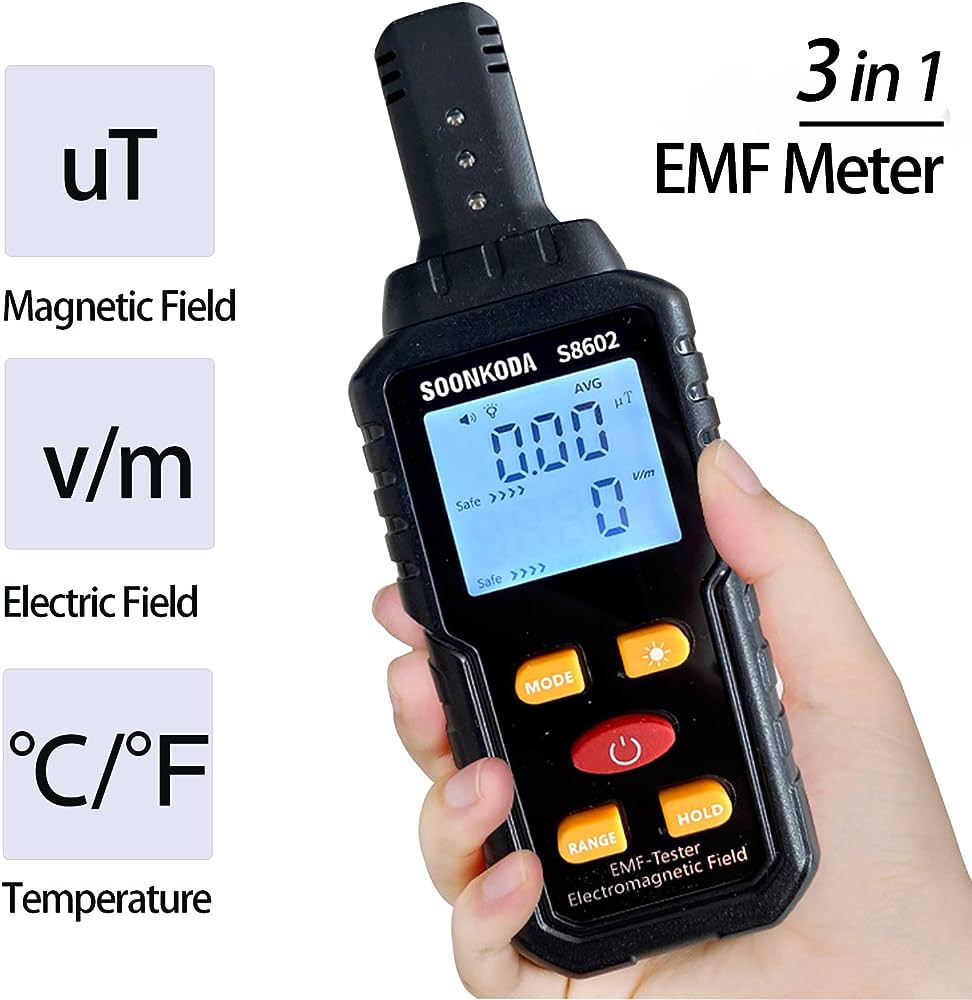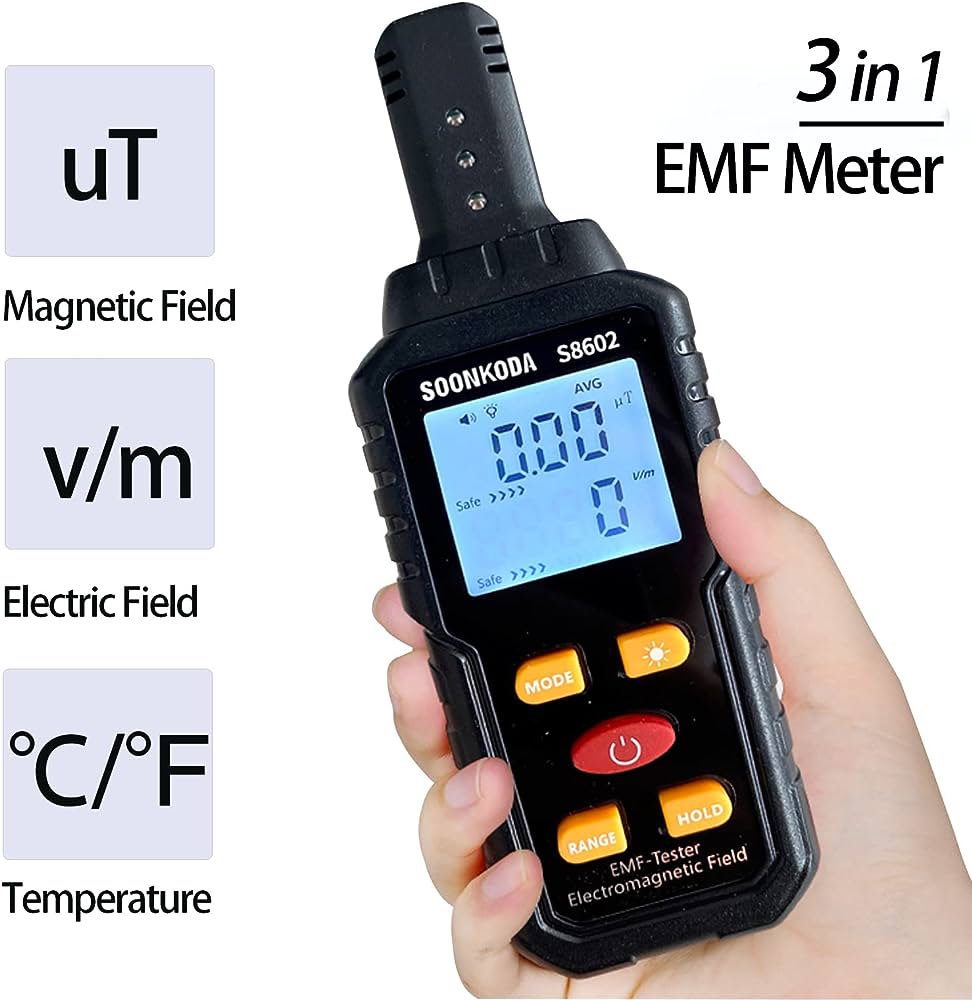In this article, you will discover the ins and outs of effectively using an EMF meter. Whether you’re a curious homeowner or a seasoned investigator, understanding how to utilize this device correctly is essential to measuring electromagnetic fields accurately. By following a few simple steps and keeping a friendly, open approach, you’ll be equipped to navigate the world of EMF detection with confidence and precision. So, let’s get started!

This image is property of www.wavecontrol.com.
Click here to check out the Ghost Hunting Spirit Box – MEL-8704R & K2 EMF Meter & EVP Recorder
Understanding EMF Meters
What is an EMF Meter?
An EMF meter, short for Electromagnetic Field meter, is a device used to measure the electromagnetic fields present in the environment. It is primarily used to detect and measure the levels of magnetic fields, electric fields, and radiofrequency fields. These fields are generated by electronic devices, power lines, wireless networks, and other sources of electromagnetic radiation.
How Does an EMF Meter Work?
An EMF meter works by using sensors that detect the changes in the electromagnetic field surrounding the device. These sensors convert the electromagnetic field intensity into an electrical signal, which is then displayed on the meter’s screen. The meters typically have different modes and settings to measure magnetic fields, electric fields, and radiofrequency fields separately. Some advanced models can also provide additional information such as field frequency and waveform.
Types of EMF Meters
There are several types of EMF meters available on the market, each designed to measure different types of electromagnetic fields. The most common types include:
- Single-Axis EMF Meters: These meters measure the strength of the fields in one direction at a time. They are suitable for basic measurements of magnetic and electric fields but may require repositioning to obtain accurate readings.
- Tri-Axis EMF Meters: These meters can measure the fields in three dimensions simultaneously. They are more convenient and accurate, making them ideal for professional use or detailed field assessments.
- Broadband EMF Meters: These meters can measure a wide range of frequencies, from extremely low-frequency magnetic fields to radiofrequency fields. They are versatile but may have limitations in terms of accuracy for specific frequency ranges.
Preparing to Use an EMF Meter
Selecting the Right EMF Meter for Your Needs
Before using an EMF meter, it is essential to choose the right device that suits your specific needs. Consider the frequency range you intend to measure, the type of fields you want to focus on, and the features you require. Research different meters, read reviews, and consult with experts if needed to ensure you make an informed decision.
Familiarizing Yourself with the EMF Meter
Once you have selected the appropriate EMF meter, take the time to familiarize yourself with its various functions and settings. Read the user manual thoroughly and understand how to navigate the menus, switch between different measurement modes, and interpret the readings. This will help you make the most of the device during your measurements.
Click here to check out the Ghost Hunting Spirit Box – MEL-8704R & K2 EMF Meter & EVP Recorder
Calibrating Your EMF Meter
Why Calibration is Important
Calibrating an EMF meter is crucial to ensure accurate and reliable measurements. Calibration verifies that the meter is correctly calibrated to measure the intended fields within specified tolerances. Without proper calibration, the readings may be incorrect, leading to misguided interpretations and potentially compromising the accuracy of your assessments.
Steps for Calibrating an EMF Meter
- Consult the user manual or manufacturer’s instructions for specific calibration procedures for your EMF meter model.
- Find a known, stable reference source with a known intensity of the field you wish to calibrate. This could be a reference magnet, a calibrated electric field generator, or a calibrated RF signal generator.
- Follow the calibration procedure provided, which may involve adjusting specific parameters or comparing the meter’s readings to the known reference source.
- Repeat the calibration process periodically or whenever you suspect the meter’s accuracy may have been compromised.
Using an EMF Meter for Magnetic Fields
Understanding Magnetic Fields
Magnetic fields are created by the flow of electric current and are present around power lines, electronic devices, and household appliances. They are also naturally occurring, such as the Earth’s magnetic field. Measuring magnetic fields is important to assess potential hazards and ensure compliance with safety guidelines.
Measuring Magnetic Fields with an EMF Meter
To measure magnetic fields with an EMF meter, ensure you are in the correct mode for magnetic field measurements. Hold the meter close to the source or the area you want to assess and observe the reading on the display. Move the meter around to different locations to identify areas of higher or lower magnetic field intensity.
Interpreting Magnetic Field Readings
The readings displayed on the EMF meter for magnetic fields are typically in units of milliGauss (mG) or microTesla (µT). Compare the readings to established safety guidelines or reference values to determine if the measured magnetic field is within acceptable limits or if further investigation is required.

This image is property of Amazon.com.
Click here to check out the Ghost Hunting Spirit Box – MEL-8704R & K2 EMF Meter & EVP Recorder
Using an EMF Meter for Electric Fields
Understanding Electric Fields
Electric fields are primarily generated by sources such as power lines, electrical appliances, and wiring systems. They can also arise from ungrounded conductive objects and can affect human health and well-being. Measuring electric fields is essential to assess potential exposure and take appropriate precautions.
Measuring Electric Fields with an EMF Meter
To measure electric fields with an EMF meter, switch to the electric field measurement mode. Hold the meter at a distance from the source or surface you want to assess and observe the reading on the display. Experiment with different orientations and distances to obtain an accurate representation of the electric field intensity.
Interpreting Electric Field Readings
Electric field readings are typically displayed in units of volts per meter (V/m) or kilovolts per meter (kV/m). Compare the readings to safety guidelines or reference values to determine if the measured electric field levels are within acceptable limits or if further action is necessary.
Using an EMF Meter for Radiofrequency Fields
Understanding Radiofrequency (RF) Fields
Radiofrequency fields are generated by wireless communication devices, such as cell phones, Wi-Fi routers, and microwave ovens. They are a form of electromagnetic radiation and can potentially have harmful effects on human health. Measuring RF fields helps assess exposure levels and take appropriate precautionary measures.
Measuring RF Fields with an EMF Meter
To measure RF fields with an EMF meter, switch to the RF field measurement mode. Hold the meter close to the source or area of interest and observe the reading on the display. Some meters may also provide options to measure specific frequency bands or frequency ranges.
Interpreting RF Field Readings
RF field readings are typically displayed in units of volts per meter (V/m) or milliwatts per square meter (mW/m²). Compare the readings to established safety guidelines or reference values to evaluate if the measured RF field levels are within acceptable limits or if further action is required.

This image is property of images.thdstatic.com.
Identifying EMF Sources
Common Sources of EMF
There are various common sources of EMF in our daily lives, including:
- Power lines: High voltage power lines generate strong magnetic and electric fields.
- Electronic devices: Appliances, computers, TVs, and smartphones emit electromagnetic fields during their operation.
- Wi-Fi routers and cell towers: Wireless communication devices emit RF fields for transmitting data.
- Microwaves and radar systems: These devices utilize RF fields for cooking or detecting objects, respectively.
- Electrical wiring and cables: Unshielded or faulty wiring can generate electric and magnetic fields.
- Transformers and motors: These devices produce strong magnetic fields due to their electric current flow.
Locating and Identifying EMF Sources
To identify EMF sources, move the EMF meter around the area of interest and look for significant increases or changes in the readings. Pay attention to the intensity and direction of the fields to determine the potential source. Isolate the source by turning off or removing suspected devices and observe the corresponding changes in the readings.
Tips for Accurate EMF Source Identification
- Maintain a systematic approach while scanning for EMF sources, covering the entire area of interest.
- Note down the readings and observations for each location and compare them later for analysis.
- Use multiple EMF meters or different measurement modes to cross-validate your findings.
- Consult with professionals or experts if you encounter difficulties or need assistance in identifying specific sources.
Reducing EMF Exposure
Understanding the Potential Risks of EMF
Excessive exposure to EMF has been associated with various health concerns, including increased risk of cancer, reproductive problems, and neurological disorders. While the scientific community continues to debate the extent of these risks, it is prudent to take precautions to minimize unnecessary exposure.
Minimizing EMF Exposure in Your Environment
Here are some practical steps you can take to reduce EMF exposure in your environment:
- Maintain distance: Stay as far away from EMF sources as possible, especially when they are actively transmitting.
- Limit device usage: Reduce the time spent using wireless devices and minimize proximity to them during usage.
- Turn off when not in use: Switch off electronic devices when not in use, especially at night or when you are not actively using them.
- Use shielding materials: Consider using EMF shielding products, such as conductive fabrics or paints, to reduce exposure from nearby sources.
- Create EMF-free zones: Designate certain areas in your home or workplace where EMF exposure is minimal or nonexistent.
- Opt for wired connections: Whenever possible, choose wired connections instead of wireless options, such as using Ethernet cables instead of Wi-Fi.

This image is property of Amazon.com.
Interpreting EMF Meter Readings
Understanding Measurement Units
EMF meters measure fields using different units, depending on the type of field being measured:
- Magnetic fields: MilliGauss (mG) or microTesla (µT) are the commonly used units for magnetic field measurements.
- Electric fields: Volts per meter (V/m) or kilovolts per meter (kV/m) are used for electric field measurements.
- RF fields: Volts per meter (V/m) or milliwatts per square meter (mW/m²) are commonly used for RF field measurements.
Comparing Readings to EMF Guidelines
Many organizations and regulatory bodies provide guidelines or reference values for EMF exposure in various settings. Compare your readings to these guidelines to determine if the measured field strengths are within acceptable limits. Pay attention to the specific frequency ranges and duration of exposure associated with the guidelines.
Factors Affecting EMF Field Strength
The field strength of EMF can be influenced by various factors, including:
- Distance from the source: Field strength decreases with distance from the source, following an inverse square law relationship.
- Type of source: Different sources emit different intensities of EMF, so field strengths may vary significantly.
- Operating conditions: The field strength can vary depending on the operating conditions of the source or device.
- Environmental interference: Other factors in the environment, such as nearby structures or electrical interference, can affect field strength.
Anomalies and Interference
During EMF measurements, it is essential to be aware of anomalies or interference that may affect the accuracy of the readings. Environmental factors, other electronic devices, or proximity to metal objects can potentially distort or amplify the measured values. Take note of any unusual fluctuations or inconsistencies in the readings and investigate further to ascertain their cause.
Additional Tips for Effective EMF Meter Usage
Maintaining Proper Distance and Orientation
To ensure accurate measurements, it is essential to maintain the proper distance and orientation between the EMF meter and the source or area of interest. Follow the manufacturer’s guidelines on optimal operating distances and orientations for the specific meter model you are using. Deviating from these recommendations may affect the accuracy of your measurements.
Taking Multiple Readings for Accuracy
To improve accuracy and reliability, take multiple readings at different locations and orientations. This helps account for variations in field strength and ensures a more representative average value for the area being assessed. Additionally, repeat measurements over time to identify any noticeable changes or trends that may require further investigation.
Avoiding Common Mistakes
To maximize the effectiveness of your EMF meter usage, avoid the following common mistakes:
- Neglecting calibration: Regularly calibrate your EMF meter to maintain accurate readings.
- Misinterpreting readings: Understand the units of measurement and compare readings to established guidelines or reference values for accurate interpretation.
- Ignoring environmental factors: Take into account environmental factors that may affect the accuracy of measurements, such as interference or proximity to metal objects.
- Using inappropriate settings: Ensure you are using the correct mode and settings for the type of field you are measuring.
- Mishandling the meter: Follow proper handling procedures, such as avoiding excessive force or impact on the meter, to prevent damage and maintain accuracy.
Supplementing EMF Meter Measurements
While EMF meters are valuable tools for assessing EMF exposure, they may not provide a complete picture. It is essential to supplement your measurements with other methods, such as consulting with experts, conducting field surveys, or obtaining information from relevant sources. Combining different approaches can help validate your findings and ensure a comprehensive assessment of EMF levels.
In conclusion, understanding and effectively using an EMF meter is crucial for assessing potential health risks and managing your exposure to electromagnetic fields. By selecting the right meter, calibrating it correctly, performing accurate measurements, and interpreting the readings within the appropriate context, you can make informed decisions to minimize EMF exposure and create a safer environment for yourself and others.
Click here to check out the Ghost Hunting Spirit Box – MEL-8704R & K2 EMF Meter & EVP Recorder

